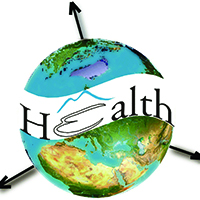There is more to satellite imagery than meets the eye

Published: 31 May 2022
Abstract Views: 2095
PDF: 400
HTML: 19
HTML: 19
Publisher's note
All claims expressed in this article are solely those of the authors and do not necessarily represent those of their affiliated organizations, or those of the publisher, the editors and the reviewers. Any product that may be evaluated in this article or claim that may be made by its manufacturer is not guaranteed or endorsed by the publisher.
All claims expressed in this article are solely those of the authors and do not necessarily represent those of their affiliated organizations, or those of the publisher, the editors and the reviewers. Any product that may be evaluated in this article or claim that may be made by its manufacturer is not guaranteed or endorsed by the publisher.
Similar Articles
- Suparat Tappo, Wongsa Laohasiriwong, Nattapong Puttanapong, Spatial association of socio-demographic, environmental factors and prevalence of diabetes mellitus in middle-aged and elderly people in Thailand , Geospatial Health: Vol. 17 No. 2 (2022)
- Thiago S. de Azevedo, Brian Patrick Bourke, Rafael Piovezan, Maria Anice M. Sallum, The influence of urban heat islands and socioeconomic factors on the spatial distribution of Aedes aegypti larval habitats , Geospatial Health: Vol. 13 No. 1 (2018)
- Suparerk Suerungruang, Kittipong Sornlorm, Wongsa Laohasiriwong, Roshan Kumar Mahato, Spatial association and modelling of under-5 mortality in Thailand, 2020 , Geospatial Health: Vol. 18 No. 2 (2023)
- Yves M. Tourre, Cécile Vignolles, Christian Viel, Flore Mounier, Climate impact on malaria in northern Burkina Faso , Geospatial Health: Vol. 12 No. 2 (2017)
- Fazlay S. Faruque, Hui Li, Worth B. Williams, Lance A. Waller, Bruce T. Brackin, Lei Zhang, Kim A. Grimes, Richard W. Finley, GeoMedStat: an integrated spatial surveillance system to track air pollution and associated healthcare events , Geospatial Health: Vol. 8 No. 3 (2014)
- Adrian M. Tompkins, Luca Caporaso, Assessment of malaria transmission changes in Africa, due to the climate impact of land use change using Coupled Model Intercomparison Project Phase 5 earth system models , Geospatial Health: Vol. 11 No. s1 (2016): HEALTHY FUTURES
- Márius V. Fuentes, Remote sensing and climate data as a key for understanding fasciolosis transmission in the Andes: review and update of an ongoing interdisciplinary project , Geospatial Health: Vol. 1 No. 1 (2006)
- Benjamin G. Jacob, Fiorella Krapp, Mario Ponce, Eduardo Gotuzzo, Daniel A. Griffith, Robert J. Novak, Accounting for autocorrelation in multi-drug resistant tuberculosis predictors using a set of parsimonious orthogonal eigenvectors aggregated in geographic space , Geospatial Health: Vol. 4 No. 2 (2010)
- Annibale Biggeri, Dolores Catelan, David Conesa, Penelope Vounatsou, Spatio-temporal statistics: applications in epidemiology, veterinary medicine and ecology , Geospatial Health: Vol. 11 No. 1 (2016): Valencia Issue
- Uriel Kitron, Julie A. Clennon, M. Carla Cecere, Ricardo E. Gürtler, Charles H. King, Gonzalo Vazquez-Prokopec, Upscale or downscale: applications of fine scale remotely sensed data to Chagas disease in Argentina and schistosomiasis in Kenya , Geospatial Health: Vol. 1 No. 1 (2006)
You may also start an advanced similarity search for this article.

 https://doi.org/10.4081/gh.2022.1106
https://doi.org/10.4081/gh.2022.1106





